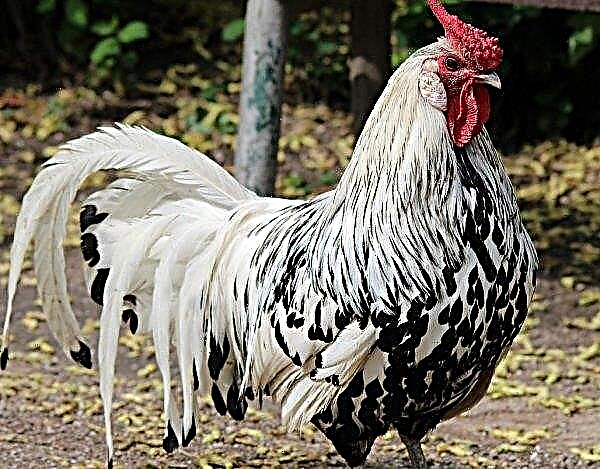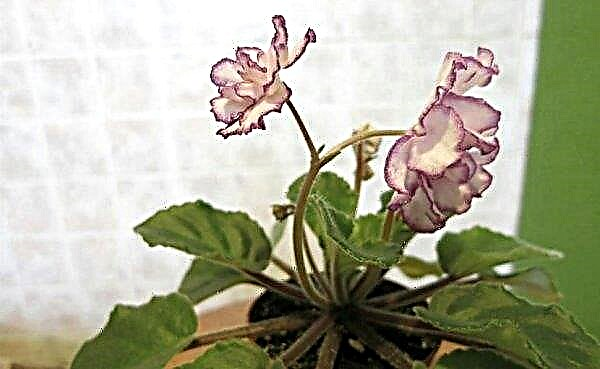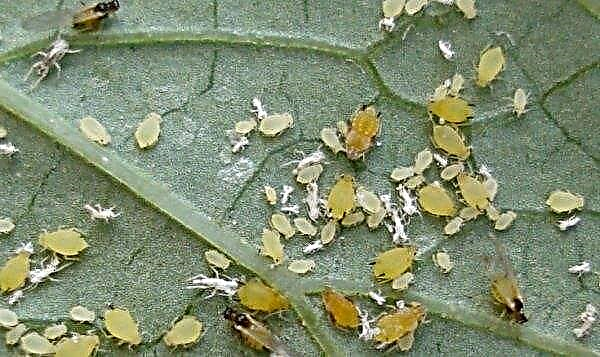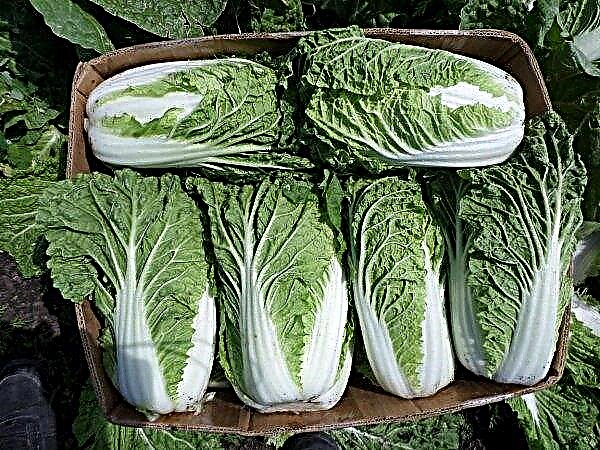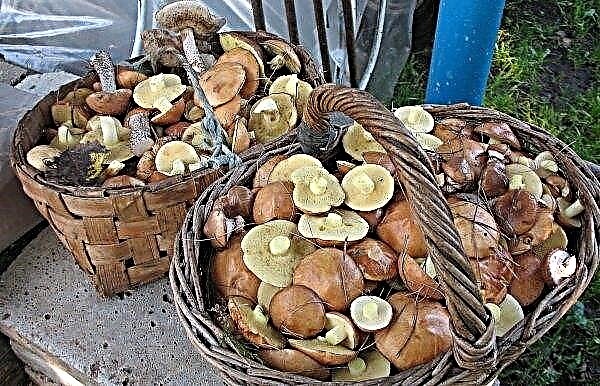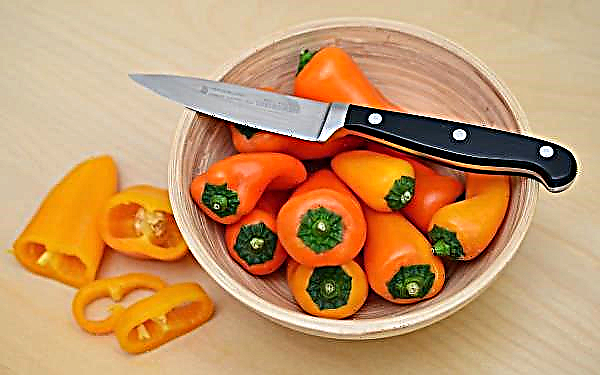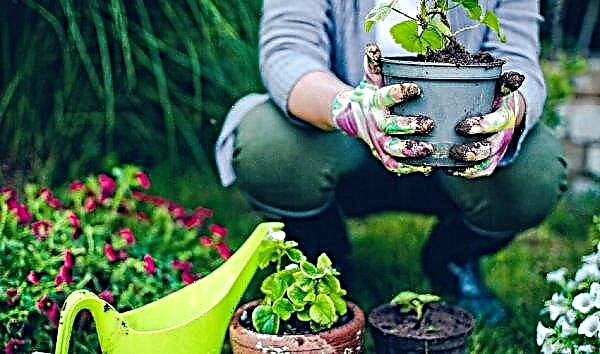The popularity of sea buckthorn is known to every person. This is a plant that is used not only for the preparation of delicious desserts, but also for the treatment of various diseases. Botanical sea buckthorn is considered one of the brightest representatives. In this article, its main varieties and the rules for their cultivation will be considered.
What are the varieties of sea buckthorn botanical
The agricultural market has a huge number of different varieties and types of sea buckthorn. One of the most popular among farmers is considered a species of sea buckthorn botanical. Very often cultivars Aromatic, Radiant and Amateur, belonging to this species. They are characterized by a beautiful bright crown and large berries.
Did you know? The scientific name of sea buckthorn is translated from Greek as “horse shine”. This is due to the fact that animals were fed with this plant, and their appearance improved from this.
The taste of the fruit is sweet and sour. Berries have a universal purpose, so they can be used to prepare different dishes and desserts. Some people prefer to use them fresh to fill the body with useful mineral components and vitamins. Sea buckthorn is a winter-hardy culture. It can withstand frosts down to -40 ° C. Life expectancy varies from 15 to 30 years.

Fragrant
Fragrant was accepted for testing in 1987.
It has the following characteristics:
- medium-sized bushes. Their maximum height is 2 m;
- umbrella-shaped crown;
- lanceolate leaves, dark green;
- the fruits are large. Their weight is about 0.65 g;
- the shape of the berries is round-oval;
- the surface is glossy, yellow-orange;
- the skin of the fruit is thin, but does not crack when ripe.
Sea-buckthorn Fragrant fruiting in the 3-4th year after planting. Ripening times are average. Flowering occurs in early summer, and the formation of fruits occurs in late August. Productivity is high. From each bush, farmers collect 10-12 kg of fruit.

Radiant
Sea-buckthorn Radiant was bred in the Botanical Garden of Moscow State University. M.V. Lomonosov using free pollination. In 1997, it was accepted for state testing.
Did you know? At the Seoul Olympics in 1988, athletes from China added sea buckthorn to the diet. It was believed that this increases stamina.
Botanical grade description:
- Srednerosly bushes, up to 2 m high.
- Crohn umbrella-shaped, sprawling.
- Rounded berries have a rich orange tint, without blush.
- The leaves are ovoid, dark green.
- The fruits reach a weight of 0.65 g.
 Products of this variety have high taste indices. Tasting score is 5 points out of 5
Products of this variety have high taste indices. Tasting score is 5 points out of 5
Amateur
Amateur sea buckthorn was included in the State Register of Russia in 1993. Zoned for cultivation in the North-West, Central and Volga-Vyatka regions.
The characteristics of this variety are as follows:
- shrubs of medium height or tall. The maximum size of plants is 4 m;
- crown of a pyramidal shape;
- on the surface of the shoots there is a small number of thorns;
- leaves are large, light green in color. On their surface there is a slight pubescence;
- the mass of berries is about 0.7 g;
- the shape of the fruit is elongated-oval;
- the skin is thin, orange-yellow;
- yields are high. From the bush you can collect 8-15 kg.

Landing and care
Botanical sea buckthorn must be planted in early spring, when the soil warms up to + 12 ° C. The planting procedure is carried out before the sap flow in the kidneys, so that the plant has time to become stronger in the ground. For sea buckthorn, well-lit areas on the periphery of the garden are preferred. It is necessary to have 1 male seedling and 3-4 female seedlings nearby. Thanks to this arrangement, productivity indicators increase.
The optimum pH for sea buckthorn is 6.5–7. If you have to plant planting material in acidic soils, then you first need to make limestone. For each 1 m², 400 g of substance are distributed. Similar procedures are carried out every 10 years. Ground water should be at a depth of 2 m, so that the root system has an optimal level of humidity.
Important! For planting, you need to buy seedlings, the age of which 1–2 years. They are more resistant to adverse environmental factors (temperature drops, diseases and pests).
When choosing planting material, carefully inspect it for cracks, stains, or other strange characteristics.. They can be signs of diseases and pests.
The preparation of the landing site is that it needs to be dug up to 1 bayonet shovel. In the process, add 20 g of potassium sulfate and 4 buckets of humus for every 1 m². After 2-3 weeks, when the fertilizers are absorbed, it is necessary to dig holes with dimensions of 65 × 65 cm. The distance between the pits should be 2 m, so that the plants do not obscure each other. Inside the hole, a small hill is made of nutrient soil (20-30 cm high), on which a seedling is placed.

Nearby they drop a metal or wooden rod, which will serve as a support. The seedling should be sprinkled with soil, which is pre-mixed with humus, sand and peat in equal proportions. Leave the root neck above the surface of the earth so that with its help the root system receives the necessary oxygen and nutrients. It should rise 3-5 cm above the ground.
Around the plant you need to make a small circular hole, which will be used for watering. After planting, the basal part is watered with 20 liters of water and mulched with humus and straw. The height of the mulch should be 30 cm.
Video: Features and care for sea buckthorn
Caring for botanical sea buckthorn consists of watering, fertilizing, pruning, loosening the soil, removing weeds and preparing for winter.
Irrigation of the soil is carried out according to the following rules:
- young shrubs (up to 5 years) should be watered every week with 30 l of water;
- adult plants irrigated 2 times a month, using 50 liters of water for each bush.
Fertilizers are applied in spring and autumn.. At the end of April, it is necessary to add a solution of potassium nitrate (50 g per 10 liters of water) in order to improve the flowering of sea buckthorn. In autumn, at the end of September, add superphosphate (100 g per 10 liters of water) to increase the resistance of shrubs to frost.
Important! Before irrigation and top dressing, it is recommended to remove weeds and weed the topsoil. Thanks to such actions, water and nutrients penetrate better into the earth.
If the weather is calm during the flowering of sea buckthorn, then you need to break a small branch of the male plant and shake it over the flowers of the female bush. Due to this, crop productivity will increase.
Pruning is required only sanitary, as shrubs do not change the shape of their crown. In spring and autumn, depending on the need, remove dry, frostbitten, cracked or diseased branches.
The process of preparing for winter depends on the age of sea buckthorn. Young plants need to be covered for the first 2 years for the winter, using agrofibre. It is removed with the onset of the first heat, so as not to provoke the development of fungal infections. Adult shrubs need careful mulching of the trunk circle. The height of the layer should be 30 cm.

Breeding methods
Reproduction of sea buckthorn botanical is carried out by several methods:
- cuttings;
- layering;
- dividing the bush.
If you decide to propagate the plant by cuttings, then you need to cut two-year growths at the end of November. Their width should be 6 cm, and the length should be at least 15 cm. All cuttings that will be prepared must be tied together with a dense thread and wrapped in a plastic bag. After that, bury them in a hole to a depth of 7 cm and sprinkle with snow. You can also use spruce branches or fallen leaves.
In early March, cuttings need to be dug up and placed in water for 3 days. Water needs to be changed daily to prevent mold from developing.. You can also add “Kornevin” (50 g per 5 l of water) to the water to stimulate the growth of shoots. After that, plant the cuttings in the hole. Keep in mind that 2-3 kidneys should remain above the surface of the soil. By autumn, the height of the plant will be about 60 cm.

Some farmers prefer to propagate sea buckthorn by layering, as this process is simpler.. You need to choose a shoot with good growth on the bush. It must be tilted to the dug hole (5 cm deep) and sprinkled with earth. Take care of the branch in a timely manner (remove weeds, loosen the upper part of the soil, water and fertilize). In the spring, after rooting, it is necessary to separate it from the mother plant and transplant it to a permanent place.
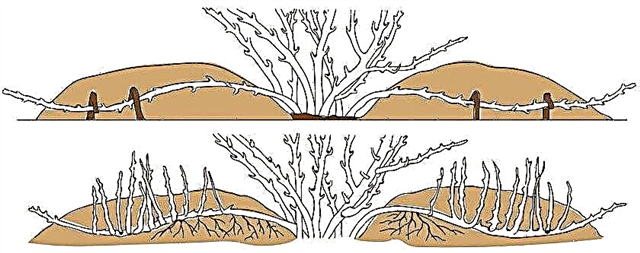
To propagate sea buckthorn by dividing the bush, you need to dig the whole plant. Remove all old branches from it and divide the bush into several parts. For convenience, use a sharp secateurs. Place each part in prepared pits and take care of them as you would for seedlings.
Diseases and Pests
Sea buckthorn botanical can be affected by the following diseases:
- Endomycosis. It appears in the form of gray mucus on the fruits. Treatment consists of spraying a solution of Bordeaux fluid (10 g per 10 liters of water).

- Black cancer. Symptoms of the disease are manifested in dark spots on the bark, the appearance of cracks and rotting wood. Against the disease, you need to use a solution of copper sulfate (20 g per 10 liters of water), spraying.

- Gray rot. The symptomatology is that the fruits of the plant become wrinkled and fade. Against this disease, you need to spray the bushes with a solution of Fitosporin (40 g per 5 liters of water).

Pests of this species include: moth, fly, aphid and gall mite. “Karbofos” (60 g per 10 l of water) is used against moths. An effective remedy against flies is Chlorophos (50 g per 5 l of water). Against aphids use "Profit" (3 ampoules per 5 liters of water). To destroy the gall tick, you need to use "Falcon" (100 g per 10 liters of water). All spraying against diseases and pests is carried out 2 times a month.
So, now you know what varieties of sea buckthorn are botanical. It is not difficult to grow them, since they are undemanding to care. Inspect the plants carefully to determine the presence of diseases and pests in a timely manner. This will prevent the death of the plant.




